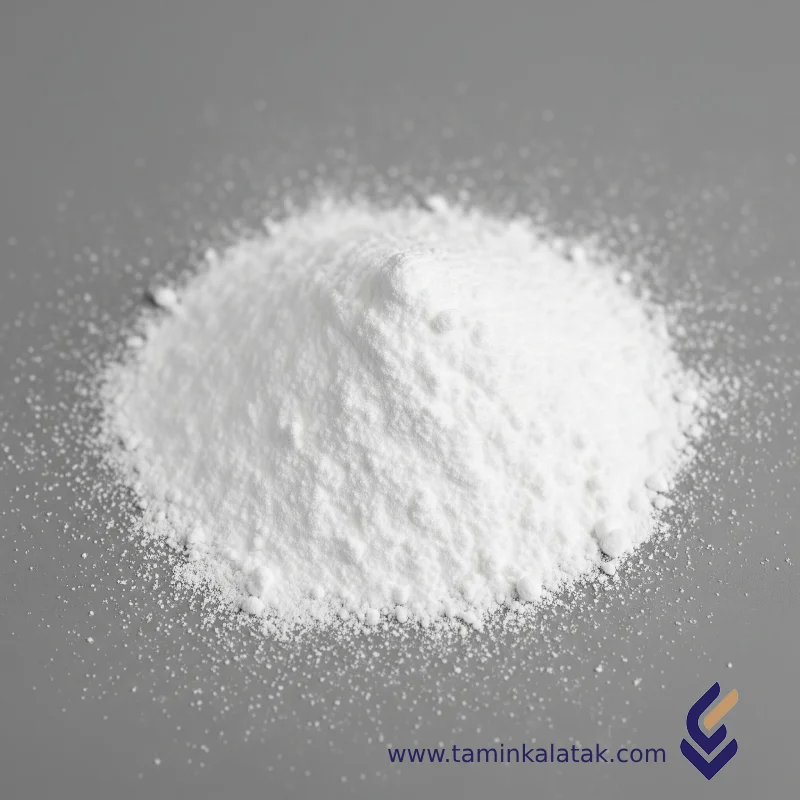Calcium diacetate
Calcium Diacetate is a chemical compound with the formula Ca(CH₃COO)₂. It is found as a white crystalline powder and is usually odorless or has a faint vinegar-like smell. Other names include calcium acetate and calcium ethanoate. The anhydrous form is very hygroscopic, so it is commonly supplied as the monohydrate (Ca(CH₃COO)₂·H₂O).
Structure of Calcium Diacetate
A molecule of calcium diacetate consists of one Ca²⁺ cation and two acetate anions (CH₃COO⁻). The calcium ion serves as the central cation, ionically bonded to two negatively charged acetate groups. Its crystalline structure varies depending on hydration.
Key Properties of Calcium Diacetate
-
Appearance: White crystalline powder
-
Odor: Generally odorless, or faint vinegar smell
-
Solubility: Freely soluble in water; slightly soluble in methanol; insoluble in acetone, ethanol, and benzene
-
Molar Mass: Approximately 158.17 g/mol (anhydrous)
-
Melting/Decomposition Point: Decomposes around 160 °C
-
Density: About 1.509 g/cm³
-
pH of Aqueous Solution: Neutral to slightly alkaline (pH ~6.3–9.6 for 10% solutions)
-
Hygroscopicity: The anhydrous form strongly absorbs moisture
Advantages of Calcium Diacetate
-
Source of Calcium: Used in dietary and pharmaceutical supplements
-
Food Preservative: Added under E263, inhibits mold growth and extends shelf life of baked goods
-
pH Regulator: Acts as a buffering agent in food processing
-
Stabilizer: Used in textile dyeing for color fixation and in food like canned vegetables and tofu to improve texture
-
Generally Recognized as Safe: Considered non-toxic at permitted levels
-
Good Water Solubility: Facilitates incorporation in various formulations
Disadvantages of Calcium Diacetate
-
Digestive Side Effects: Overconsumption or sensitivity may cause mild GI symptoms like bloating, constipation, or gas
-
Hygroscopic Nature: Needs dry storage to prevent moisture absorption
-
Drug Interactions: May interfere with absorption of certain medications—consultation advised when taken concurrently
-
Risk of Hypercalcemia: Excessive intake can raise blood calcium levels, leading to related health risks
Applications of Calcium Diacetate
Food Industry:
-
Preservative (anti-mold) in breads, pastries, and other baked goods
-
pH regulator and buffer
-
Stabilizer/firming agent in foods such as tofu (as a preferred alternative to calcium sulfate) and canned vegetables
-
Ingredient in candies, desserts, puddings
-
Additive in animal feed
Pharmaceutical Sector:
-
Buffering agent in medicinal formulations
-
Calcium supplement for deficiency
-
Phosphate binder for dialysis patients with high blood phosphate
Textile Industry:
-
Used as a color fixer
Chemical Industry:
-
Catalyst in select chemical reactions
-
Previously used in acetone production
Wastewater Treatment:
-
Employed to remove phosphate from wastewater
Soap Production:
-
Utilized as an alkali in certain soap manufacturing
Fire Gel Production:
-
When dissolved in alcohol at saturation, it forms a semi-solid, combustible gel suitable for flame use
Applications
| Applications | , , , |
|---|
Calcium diacetate
| Chemical name | Chemical formula | CAS number | grade | Vapor pressure | Physical appearance | Solubility in water | Density (at 20°C) | Melting point |
|---|---|---|---|---|---|---|---|---|
| calcium diacetate | Ca(CH₃COO)₂ یا Ca(C₂H₃O₂)₂ | 62-54-4 | Food grade, USP, Analytical | Very low (≈ zero) | White powder or crystals, odorless or with a faint odor of acetate | Very soluble (34 g/100 mL at 0°C) | 1.509 g/cm³ (anhydrous) | ~160°C (with decomposition) |







